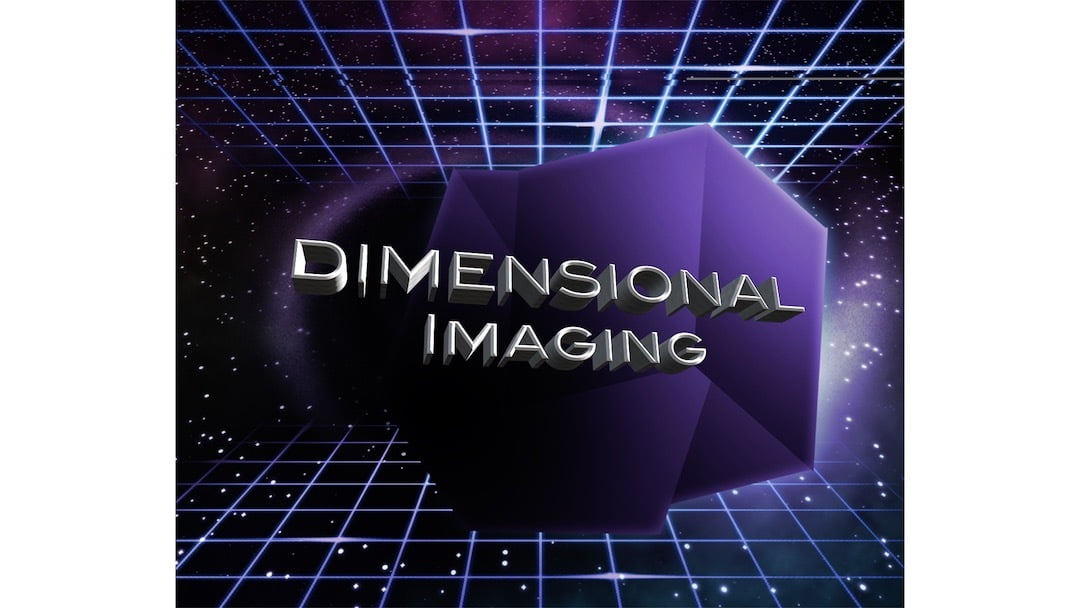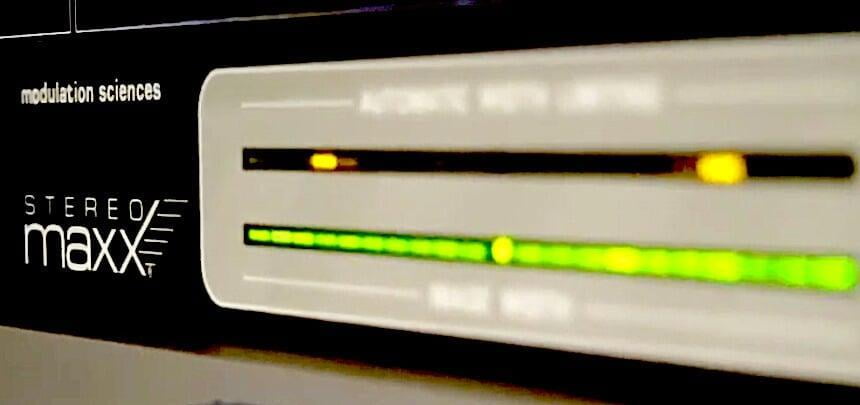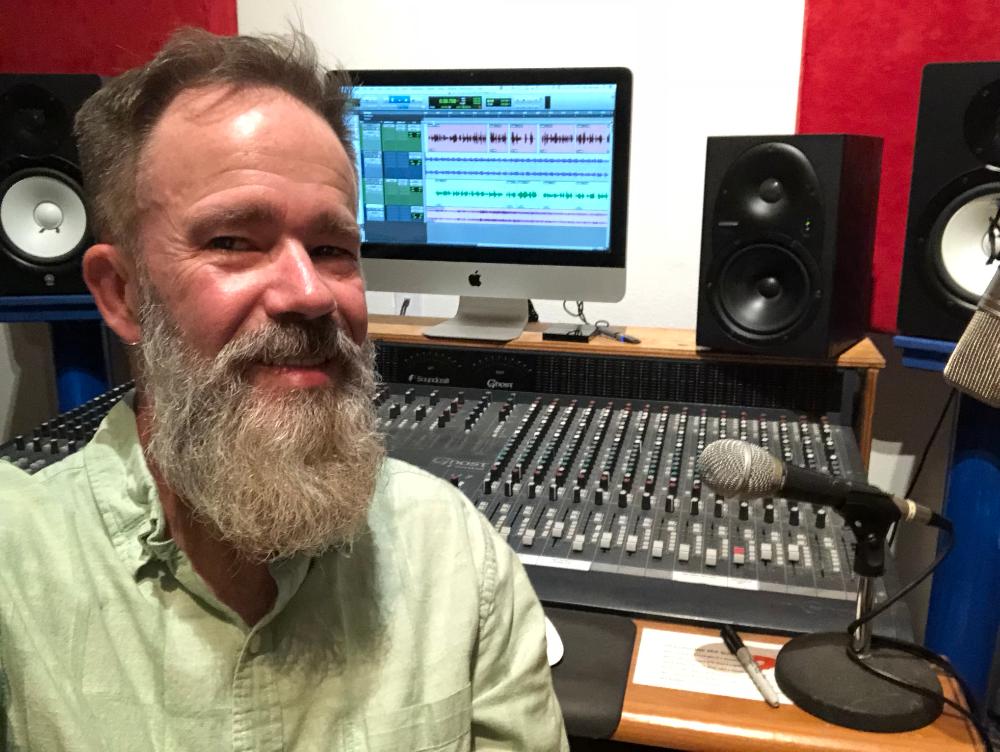Radio station branding in today's 3-D landscape
What's now possible in sound production means the audience has new––and higher––expectations for their entertainment sound experience. Let's explore cutting edge radio stationimaging!

Binaural sound design
Audiences experience audio content on a wider variety of playback options than ever.
With proper technique, radio imaging can be designed to sound good anywhere, on any system.
Exploring the possibilities
To touch on my background, I am a producer of sound design, music and voice over. Within the broad scope of my work, I’ve had the pleasure of producing radio imaging and affiliate TV branding for decades. But the technology available for both the production side and the consumer side have made great advances, and I’ve struggled at times to keep up with not just what I should be doing––but how to do it. And sometimes I even ask if I should do it.
Although I’m speaking directly to radio and TV programmers here, let me say that every broadcast and internet media platform is the ideal platform to excel in sound design quality and style. Radio imaging is an especially great playground for experimentation. When you consider that the number one production goal in radio imaging and TV branding is to have the audio stand out in bold relief from the background, you can easily understand why it’s so important to work hard at creating a higher level of sound quality in broadcast production.
But are things like 3-D sound, Ambisonics and Atmos just gimmicks? And on the technical side: is it possible for your audience to experience such sound processing on the wide variety of tech they experience delivery on? Will that extra effort put into the production of your radio sweepers or TV news teasers translate across all user devices and scenarios?
To explore answers to these questions, let me take you down the slightly technical road I navigate, one where I need to ensure I’m doing my very best at creating a more immersive and impactful sound experience.
Black box technology in the radio broadcast industry
Who in Radio doesn’t remember being summoned to Denny’s on a Sunday Afternoon by the PD to engage in a war-room plan to overthrow the newest competitor over 19 coffees and a stack of buttermilk pancakes courtesy of scrip’ from the prize closet?
No? Well, I guess I was on the “inside” back in the day. But you know what I’m talking about.
Radio station programmers are more competitive than little league dads or pageant moms. An attitude leading to the following edicts:
Make the imaging sound louder.
Make the music sound wider.
Make the jocks sound deeper.
Hell, make the entire station BIGGER W I D E R and LOUDER.
Which leads to the following conversation:
Radio PD: Make the station louder.
Chief Engineer: It can only be so loud––and it already is.
PD: No, listen! I was in Atlanta, and there was a station and it was TEN times louder than anybody else! And–– it was in THREE-D sound! We need to find out what they were using and get that black box. Because I know there is a box that will do that.

Does this make my stereo look wide?
Old school: Rack mount hardware for radio or TV audio "stereo widening".
As a producer of Radio branding, I still get the push to make imaging bigger and louder. Considering that Radio is the original battlefield of the Loudness Wars (courtesy of the original Orban Optimod multiband signal processor), making the signal wider was, for years, the final frontier for those seeking to make their radio stations somehow bigger and badder with just a rack mount box. As far as making the station sound “wider”, there are numerous software options now, but back in the day there were two choices: The Orban 222A Spatial Enhancer, and the Modulation Sciences StereoMaxx. Both were black boxes designed to literally make the sound coming out of the listeners’ speakers wider than the speakers. Many radio stations still have these two devices serving up a "wider" on-air signal to this day. Note that stereo “widening” is not the same as tech like binaural panning, nor platforms like Dolby Atmos or Sennheiser Ambisonics. Stereo widening just does what it says––but not necessarily without side effects: things like vocals in songs seem to sink to the back of the room, and the reverb in the songs increases. This can literally push the singer to the back of the sound stage in the worst scenario, giving the listener the impression they have a crummy seat at the back of the auditorium. Considering the vocals are the money track in pop music, that’s a kinda risky thing, yes? Still, it can create a slightly more immersive, if not distracting sound stage. Thankfully, such stereo widening tech comes with an “amount” control.
But as for my fledgling days in Radio, I had no involvement in a radio station’s signal chain, what with being hole up in the production studio concentrating on recording and mixing techniques. But of course, I was not at all unaware of what happened to what I produced as it hit the meat grinder of the station’s signal processor chain. And this is where I learned what can happen when radio station imaging that is produced with crazy stereo enhancement effects collides with an additional “enhancement” box nearer to the transmitter.
I directly discovered this when I inherited a few black boxes that were retired from the station on-air signal chain: including stereo wideners, earlier versions of the Orban Optimod, and a gem called the Aphex Aural Exciter: a true black box that did things like “harmonic generation” and “bass extension”. As these weapons ended up in my hands, I deployed them in the production chain, jamming the station’s imaging sweepers and contest promos through these fairy-dust devices like Tesla rocking his giant, lightning bolt spewing coil.
But was I making the station imaging bigger? Were the contest promos better and more immersive? Well, it only took a matter of minutes to discover the answer. I could of course hear the results of specific production processes nearly immediately when the new liners played on-air. And what I discovered was that the on-air results of ham-fisted black box studio processing were actually a combination of what I did in production, and what the on-air chain did in addition. I learned that there was more to a big sonic impression than just flipping the switch on some magic box. Here’s the main trouble with things like stereo widening via a box in the on-air chain: The effect is applied to everything that hits the air, and not just selected elements of a production or song. So, some elements of your programming might sound better. Some might sound worse.
The path to more impactful radio imaging
It’s important for any imaging service––or any production director for that matter––to know what devices are in the radio station’s signal path, and what they are doing, exactly. This 100 percent determines what an imaging producer should––and should not––do in the production process. Put simply, if a radio station employs some sort of stereo widening as a matter of course, the imaging should most definitely not be produced with stereo widening. Similarly, if your radio station is hammering the signal coming off the board with multi-level and multi-band processing by cranking the controls up til all the red lights start flashing––the station's imaging sweepers will almost always sound better without being produced with compression and limiting.
This is why, when taking on a new client, I first ask what the station’s signal processing chain includes, and how hard any limiters and compressors are being hit. Once I know that, I can proceed with a method of production tailor made to sound best on that radio station’s signal.
What's the difference between stereo widening and binaural panning?
Buzzwords like 3-D spatialization, binaural panning etc. can imply that something very cool is being delivered, but unless you understand what these processes do, you can’t know whether they will sound good on your station, nor whether the producer delivering content with these techniques really understands how to use them.
Put simply: Binaural panning allows the producer to place sound elements in a 3-dimensional space, rather than just panning them left, right or center. Voice over and sound effects can be placed near, far, above or below the listener with binaural panning. Best of all, the listener doesn't need special equipment to experience this effect. Of course, it’s important to note that some specialized 3-D/spatialized sound formats require specialized listening devices, but that's limited to mostly the gaming industry. Binaural panning can be heard to its fullest extent with regular headphones, and to a great extent with speakers. Of course, it will not do anything at all on a single speaker/mono device like Apple’s HomePod Mini. So, while radio promos produced with binaural panning can’t convey the magic on Apple’s HomePod Mini or other single speaker thingy, neither will traditional stereo be heard on such a device. But, if employed judiciously, such 3-D techniques will never sound bad on single speaker devices. A primary rule in producing audio is to listen to what you create on a single speaker/mono playback source, to be sure it works there as well as on headphones, etc. This is often referred to in the mixing profession as "mono check".
And remember this: modern music is produced with all sorts of tech trickery, including various methods of stereo widening and binaural panning. Sometimes these tricks are applied to the entire song, but mostly to just specific elements within the song. The idea is the same: it will sound fine in mono, great with speakers and extraordinary on headphones.
To dive deeper into the concept of 3-D sound: binaural panning takes into account how your human hearing has evolved to detect which direction a sound is coming from, how far away it is, and which way (if any) it is moving. This brings a lot to the party, and at the very least creates a deeper, more involved soundscape. Of course, there are lots of other tricks involved in mixing sound design that don’t involve 3-D or binaural panning at all, including knowing how to carve out space in a mix with equalization, as well as tasteful editing, and syncing voice-over to the beat, but that’s beyond the scope here.
Your safest bet as a radio or TV programmer
It's possible that many radio programmers don't actually know if some black box "stereo widener" is being used in their station's signal path. If you don't know, it's a good idea to investigate. And, let me offer you a simple suggestion: Considering that you have no idea what processing has been done already to the musical content delivered to your station, why not simply do away with tricky things like stereo widening in your on-air signal chain? This eliminates having to worry that your signal processing will mix badly with whatever stereo enhancing tech is already already embedded in content like songs or outsourced imaging production. Remember what I said earlier about producing something with “stereo widening” and then, that thing going through additional stereo widening in the station’s signal chain? Just keep in mind that anyone who is in charge of sound design production is already twisting knobs of their newest thingy, attempting to make their work stand out.
Your station imaging can stand out this way
Most all consumer devices and systems are designed to accept any type of audio production, from a mono version of a Louis Armstrong song to the latest 3-D EDM track to a multi-guest podcast with creative panning of guest microphones. Your station should sound good on an Apple HomePod Mini, as well as somebody’s home Dolby Atmos setup. Assuming a station is not using any type of across-the-board 3-D whatchamajiggery in their signal chain, producers such as myself can go about the business of creating a 3-D mix for everything from station imaging to the latest pop song without fear that there will be an ugly matter-vs-antimatter collision on-air. And know this: from a production standpoint, I at least do not simply slap a 3-D “effect” on the mix and call it a day. Mixing for a spacious, deep and 3-dimensional presentation of anything depends on knowledge, skill, and the bit of extra time needed to do anything above average. And in an ideal world, I know that how it sounds through my studio monitors is pretty much how it will sound on-air. Speaking on behalf of sound designers and producers everywhere: we always aim for a deep, immersive sound stage in whatever we create. We’ve got a lot of tricks up our sleeve, and they don’t involve a single “trick effect” slapped across the whole mix. And as new platforms reach new audiences, we’re up to the task of learning new tools and techniques to create better, more impactful listener experiences.
How 3-D binaural panning is best approached in audio production.
My goal is not to create gimmicky and tiring sound design. It doesn't matter whether we're talking about radio imaging, Affiliate TV, music or commercials––the trick is to create a natural soundscape where things sit in their own space and seem "alive". This serves to create clarity and definition at the very least, if not a totally involving soundscape. Voice-over, for example, will be more intelligible with immersive sound––meaning the producer doesn't have to turn down music and effects in production. I mean, the music and effects are there for a reason! And, for ear candy, selected words or sound effects can even move around within the sound field––and not just left to right, but rotating around, moving toward or away from the listener. As to which sound elements do acrobatics, its of course a matter of taste. As with anything, too much is going to be a distraction to the message. Good sound design just works. 3-D sound via binaural panning works with the overall message, not against it.

About Ray Norman
Ray Norman has produced radio station imaging and broadcast branding for over 3 decades. You can listen to examples of his work here.